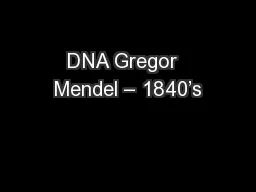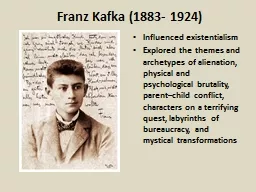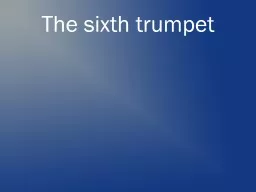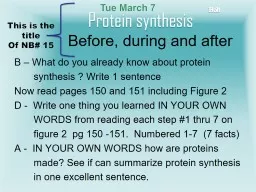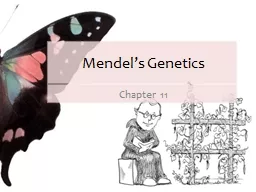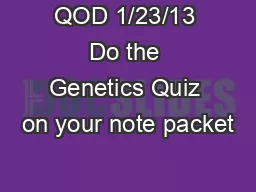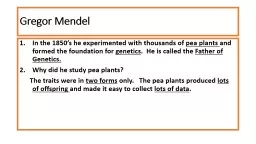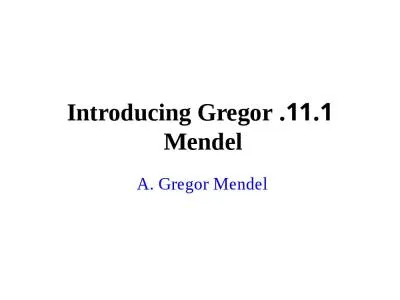PPT-DNA Gregor Mendel – 1840’s
Author : conchita-marotz | Published Date : 2018-03-20
Conclusion Heredity material was packaged in discrete transferable units came up with law of segregation and law of independent assortment Thomas Morgan early 1900s
Presentation Embed Code
Download Presentation
Download Presentation The PPT/PDF document "DNA Gregor Mendel – 1840’s" is the property of its rightful owner. Permission is granted to download and print the materials on this website for personal, non-commercial use only, and to display it on your personal computer provided you do not modify the materials and that you retain all copyright notices contained in the materials. By downloading content from our website, you accept the terms of this agreement.
DNA Gregor Mendel – 1840’s: Transcript
Download Rules Of Document
"DNA Gregor Mendel – 1840’s"The content belongs to its owner. You may download and print it for personal use, without modification, and keep all copyright notices. By downloading, you agree to these terms.
Related Documents

